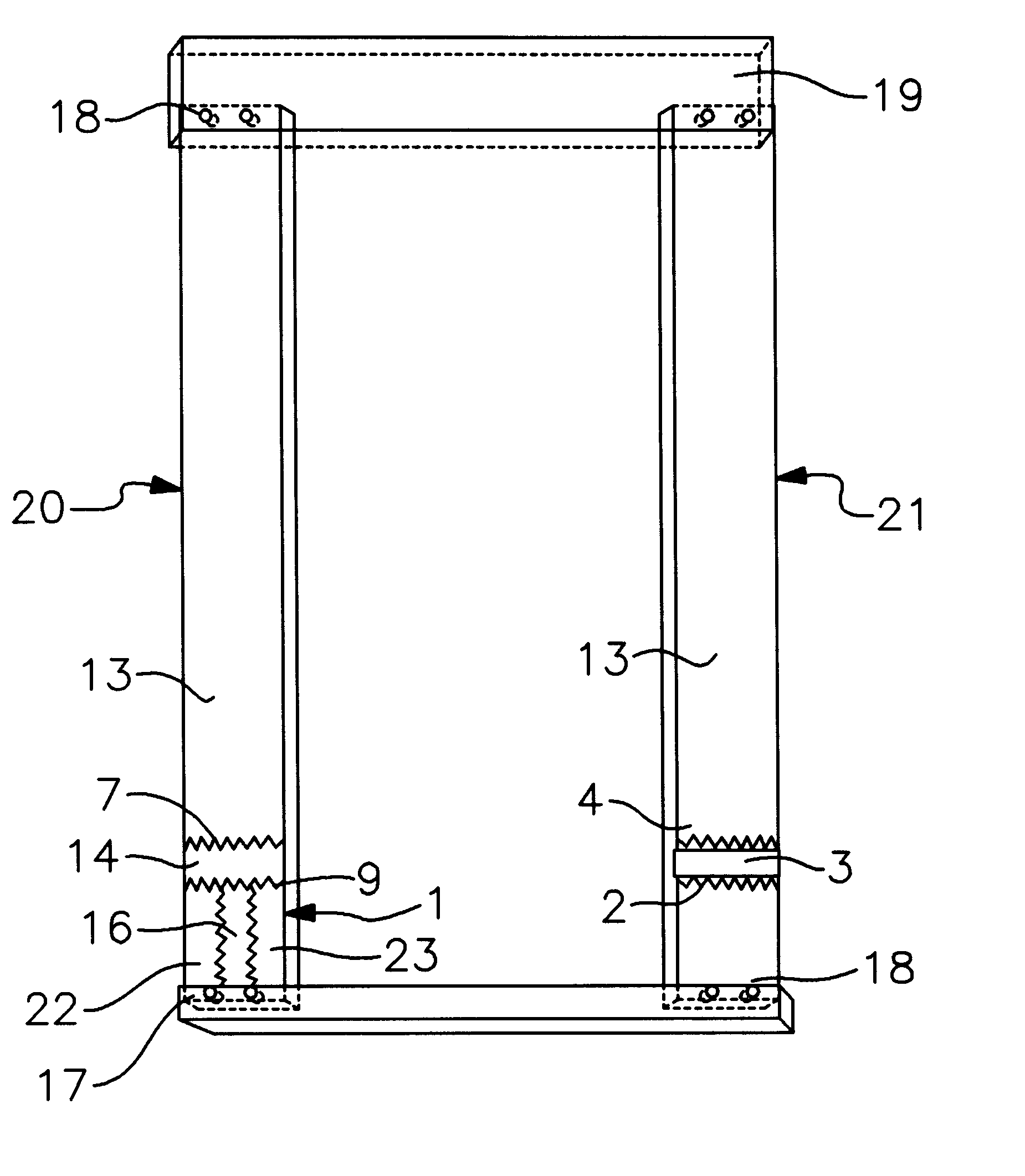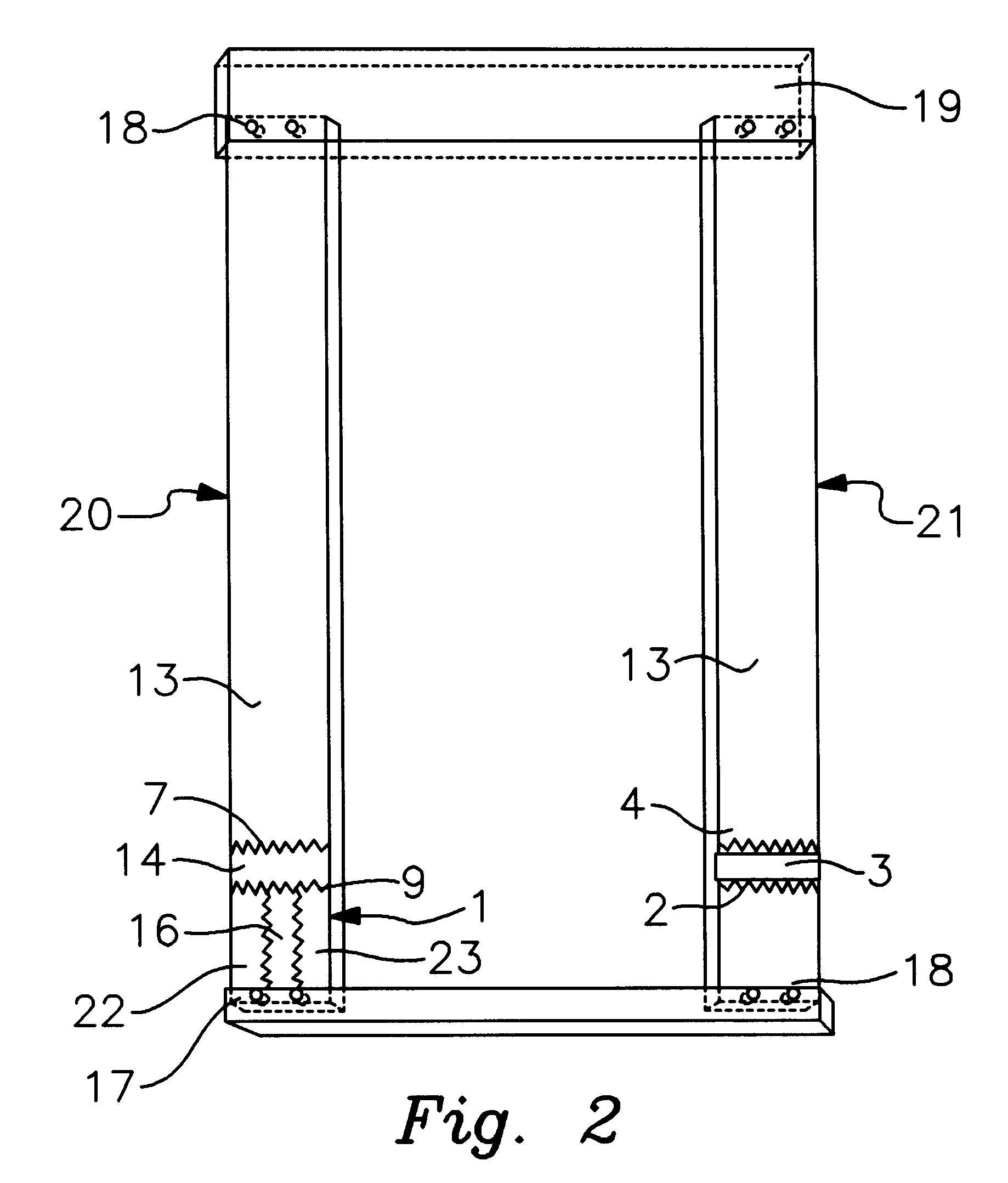Frame with environment resistant members
a technology of environment-resistant members and frames, which is applied in the direction of frames, joists, windows/door frames, etc., can solve the problems of affecting the cell structure of treated lumber, the relative distortion of historical treated lumber, and the less desirable treatment of treated lumber, so as to minimize the present warping, the effect of cost saving and cost saving
- Summary
- Abstract
- Description
- Claims
- Application Information
AI Technical Summary
Benefits of technology
Problems solved by technology
Method used
Image
Examples
Embodiment Construction
As can best be seen by FIG. 1a the invention comprises a first lumber member 1 (which may itself be made of several different lengths of lumber joined) having a serrated edge 2 which is joined by glue 3 to a corresponding serrated edge 4 of a second lumber member 5 in order to form a continuous unit. The glue line made of glue 3 is shown in an exaggerated size for reference purposes only. The quantity of size of the glue line formed by the glue is governed by the amount of glue desired for this type of joining process and is typically a very thin line, most of the glue being forced out of the interface of the corresponding serrated edges by the hydraulic press which pushes the first lumber member 1 into the second lumber member 5. FIG. 1b shows the joined edge 9 of the members 1 and 5. First lumber member is a KDAT treated or otherwise treated member which has a length defined by the parameters of the ultimate use and quality control standards requiring the treated first lumber memb...
PUM
 Login to View More
Login to View More Abstract
Description
Claims
Application Information
 Login to View More
Login to View More - R&D
- Intellectual Property
- Life Sciences
- Materials
- Tech Scout
- Unparalleled Data Quality
- Higher Quality Content
- 60% Fewer Hallucinations
Browse by: Latest US Patents, China's latest patents, Technical Efficacy Thesaurus, Application Domain, Technology Topic, Popular Technical Reports.
© 2025 PatSnap. All rights reserved.Legal|Privacy policy|Modern Slavery Act Transparency Statement|Sitemap|About US| Contact US: help@patsnap.com



